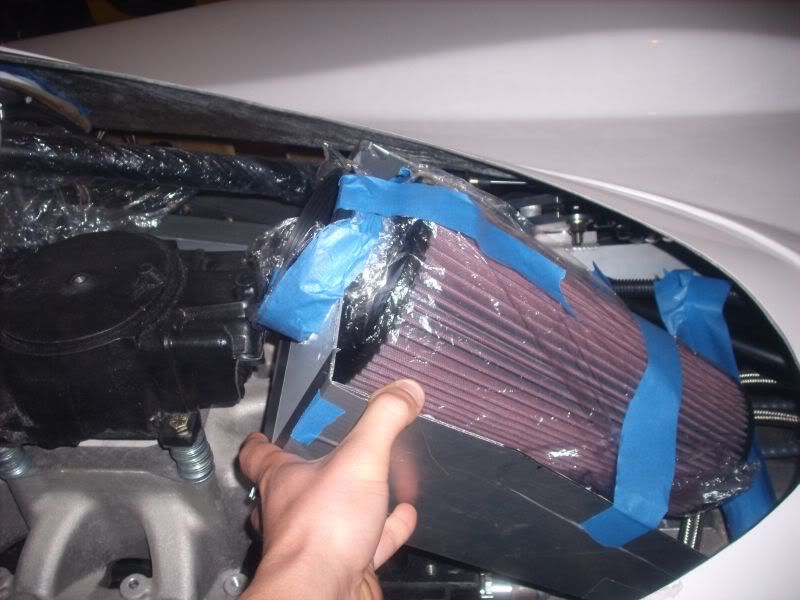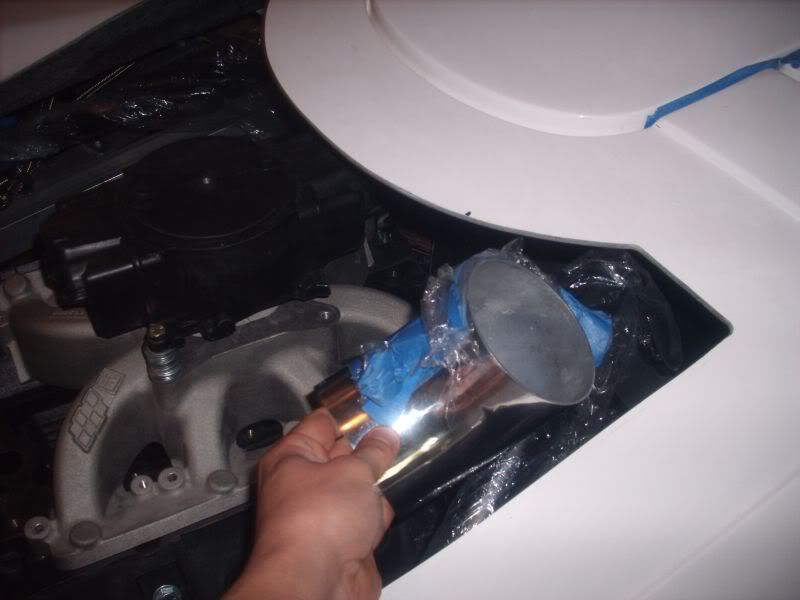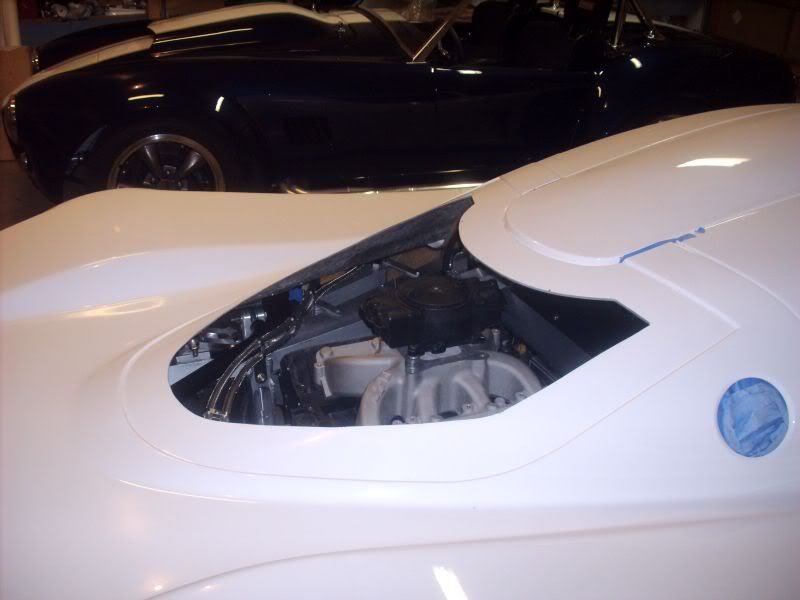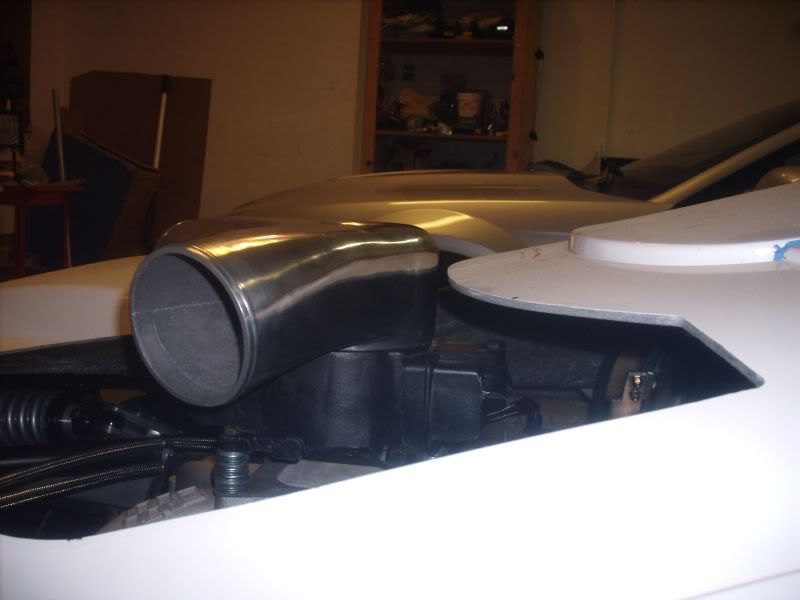Maybe ya'll can give me some further suggestions for my setup then. As a note, I have no intention of making it out of plastic or any type of special aerospace material - special materials are when project costs end up going from $100 to $5000, lol.
I could possibly make it out of fiberglass since it doesn't conduct heat, but I'd be concerned about how close it is to heat sources.
Anyways, here's the setup :
Engine needs ~1000cfm. So I'm using an EV Pro carb blow-through hat (flows 1400cfm n/a)
(generic picture)
Air filter is 4'' connical, 12'' long (flows 1204cfm)
I've tried multiple ideas, but the only way I can position is to by basically putting a 30* angle onto the carb hat, then run the filter diagonal along the intake manifold like this:
I've built a partial air box - it covers the bottom of the filter and goes half-way up the sides (I can't make it too big otherwise I won't be able to fit a rear scoop back there).
What I'm also going to do is cut 2 3'' holes on the side of the airbox, then run flexible ducting from those holes to 45* pipes located on the roll bars, directly in the path of oncoming air entering the rear scoop
This way I can slam cool air into and around the air filter.
The only "bad" thing about this idea is that basically the filter is located behind the engine, above the transaxle (which can get hot).
I'm hoping that by using reflective foil on the outside of the box it will bounce most of the heat back; that, plus having 2 3'' ductings running into it, will keep the air relatively cool.
So I guess 2 questions
1 - Do you guys see anything wrong with this?
2 - Any suggestions to improve on this idea, heh.










